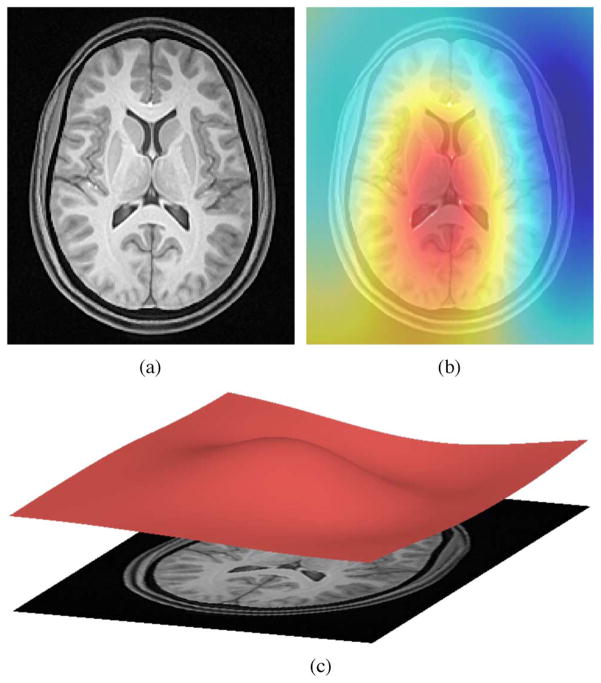Preprocessing of MRI data before model fitting
Improves or extends the data to prepare for analysis. We can correct or adjust data for a number of experimental errors.
Structural images are smoothed by applying a filter, in this case a 3D Gaussian kernel [3], to the image. Smoothing increases the signal-to-noise ratio of data by filtering the highest frequencies from the domain: i.e. removing the smallest scale changes among voxels. Hence making the large scale changes more apparent, especially as there is some inherent variability in location and reduce spatial differences between subjects. The trade-off being losing resolution by soothing.
Acts as a preliminary step as it increases speed and accuracy of diagnosis. It removes the non-cerebral tissues like skull, scalp, and dura from brain images. A simple skull stripping algorithm (S3)[1] based on brain anatomy and image intensity characteristics is shown below:

One of the challenges in working with MRI data is dealing with the artifacts produced either by inhomogeneity in the magnetic field or small movements made during scan time. This results in an intensity gradient over the image that can easily lead to misclassification. The stronger the magnetic field strength, the higher the bias field. Beyond 1.5T magnetic field strength can considerably affect MRI analysis.
n4ITK bias correction on all T1 and T1C images in the dataset removes the intensity gradient on each scan, as it estimates the bias field uisng several algorithms and then reapplies that field in reverse to alter the image back to a steady state.